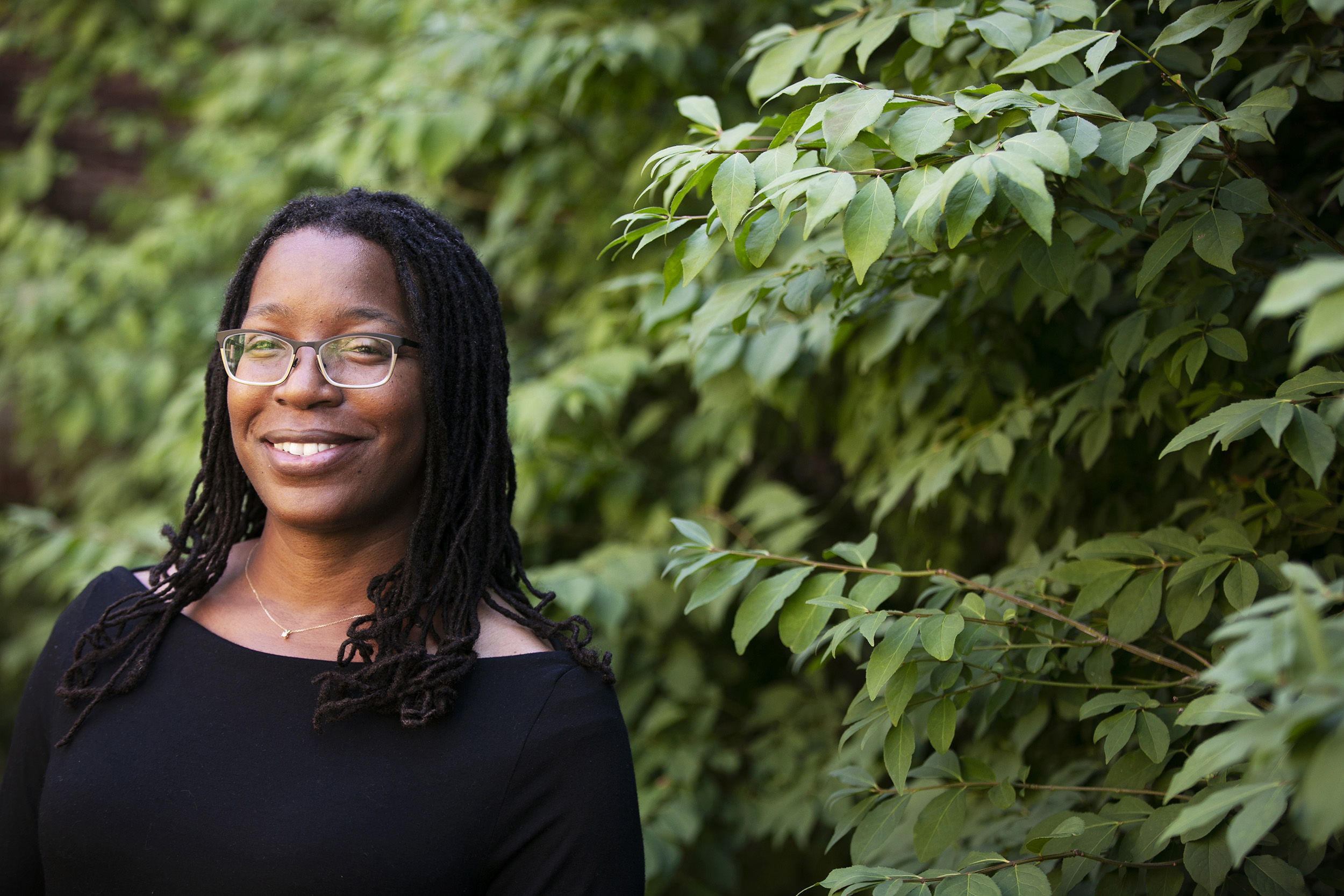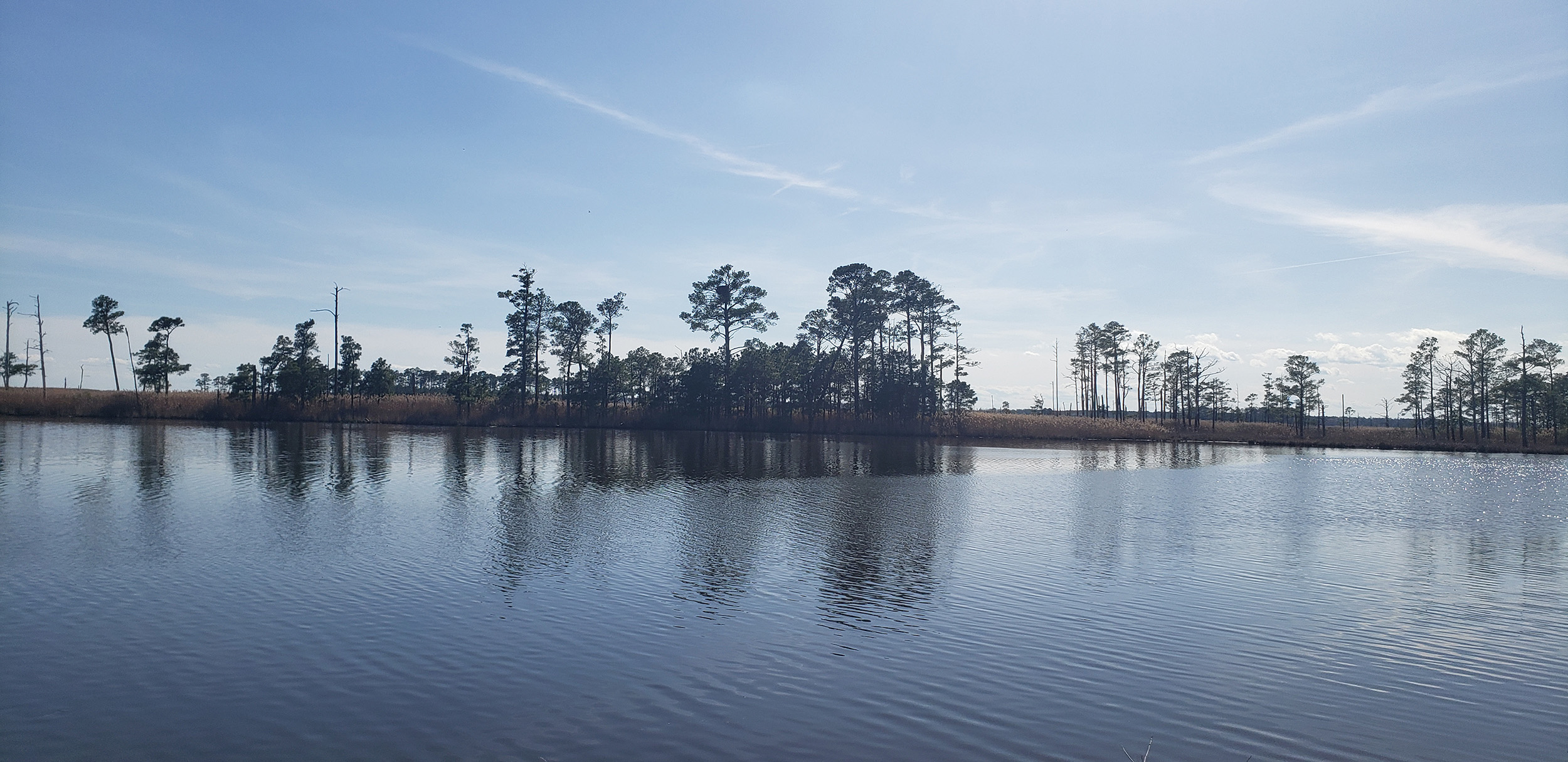
Harriet Tubman at around the age of 65, Auburn, New York, circa 1885.
Photo by Seymour Squyer via National Portrait Gallery, Smithsonian Institution
What Harriet Tubman did with rest of her life
Tiya Miles’ new biography looks at development of ‘eco-spiritual’ worldview, how it served her with Underground Railroad, later missions
Many Americans today have a singular view of Harriet Tubman, the 19th-century hero who rescued herself and at least 70 others from slavery before the outbreak of the Civil War.
“We’re really focused on segments of her life that match up with a cinematic adventure story,” said Tiya Miles, the Michael Garvey Professor of History. “But Tubman lived a long life, and she was involved with the Underground Railroad for only about a decade. What did she do with the rest of her years?”
Miles provides an answer in her new book, “Night Flyer: Harriet Tubman and the Faith Dreams of a Free People,” with its focus on the “eco-spiritual” worldview that made Tubman’s heroism possible. The biography begins with Tubman’s early days as a tenacious child who endures slavery’s abuses while acquiring deep knowledge of the natural world. It also gets to the root of Tubman’s abiding faith in God, a source of solace and strength from early girlhood.
The book’s June 18 release marks the debut of Penguin Press’ Significations series, featuring top thinkers on major Black cultural figures, curated and edited by Henry Louis Gates Jr., the Alphonse Fletcher University Professor. Coming next month is a biography on Mary McLeod Bethune, the turn-of-the-20th-century educator and activist, authored by Brown University’s Noliwe Rooks.
We caught up with Miles, winner of the 2021 National Book Award for “All That She Carried,” to learn more about “Night Flyer.” The interview was edited for length and clarity.

Tiya Miles.
File photo by Stephanie Mitchell/Harvard Staff Photographer
This book explores the development of Tubman’s worldview. Where did you get the idea for this approach?
Like many kids growing up in the U.S., I saw Harriet Tubman on posters in my elementary school classrooms and heard about her every year during Black History Month. When I became a scholar of slavery studies, I saw Tubman all across the literature. It wasn’t until I became conscious of environmental issues, and turned my attention toward environmental history, that I realized Tubman was an important figure for the ways she interacted with the natural world.
Around the time of Hurricane Katrina, when the exposure of African American people to environmental harms became much clearer, I realized I wanted to write about Tubman and the ways she navigated her environment toward the ends of freeing herself and many others from slavery.
I’m immediately struck by the similarities to your previous title, “Wild Girls: How the Outdoors Shaped the Women Who Challenged a Nation” (2023).
“Wild Girls” was really inspired by my interest in Harriet Tubman. Thinking about Tubman and the outdoors for a book about the history of girls in the outdoors, writ large, led me back to seeing her as a child — and to seeing her experiences in entirely new light. I realized how much being in nature shaped her understanding of who she was and what she was capable of.
I then turned to other female figures in the 19th century and asked if the same applied to them. And it did! So with the help of Tubman, I really found my way to an interpretation about girls and the outdoors in the U.S.
Why did you return to Tubman so quickly for your very next book?
“Wild Girls” was part of a series called Norton Shorts, and I found there just wasn’t enough room for all I wanted to say. Working on “Night Flyer” allowed me to reopen the question of Harriet Tubman and nature — to revisit primary materials, to bring in a whole host of secondary materials, and to fit this exploration with the new series edited by Henry Louis Gates Jr.
What I really saw was that, yes, nature was prominent, but so was something else. And that was Tubman’s very full, very rich, very real spiritual and religious life.

Water, sky, land, and loblolly pine trees in the Maryland county where Tubman was born.
Photo by Perri Meldon, 2022
How did Tubman acquire her deep ecological knowledge?
From around the age of 4, Harriet Tubman — who at that time was known as Araminta Ross, or Minty — was leased out by her owners to other enslavers with farms near the eastern shore of the Chesapeake Bay in Maryland. She was often forced to do work that was terrible for a child, like collecting muskrats from traps. As an adolescent, she was leased out for outdoor manual labor, and then she got permission to hire herself out to work in the local timber industry.
Her education, as far as we can tell, was influenced by what she could see and hear and touch, but also by the fact that her father worked in the same woods. He was a foreman of a group of people, both free and enslaved, who were doing timbering work. Tubman probably learned from her father about the differences between tree species, how to identify stars in the night sky, and what would have been edible in those woods.
How did this knowledge serve her Underground Railroad mission?
It’s really hard for us now to understand how difficult and even impossible it was for enslaved people to escape captivity. As a result, the mass number of African Americans who were enslaved had to wait until the Civil War to obtain their freedom.
Many were living in isolated locations where roads were unmarked and unmapped. There were thick forests, wide waterways, and deep swamps, all of which were filled with wildlife that could be hazardous.
Those who did make the attempt had to cover great distances to get from southern states to the north. And they would do this knowing there were people on the lookout to identify them; there were hunters on their trail. That meant knowing how to sustain your own life and the lives of those making the journey with you. It meant being able to access water, food, and shelter. It meant knowing what path led through which woods, which waterways were nearby, which animals were dangerous.
“She spent the rest of her life taking people in, aiding them, and showing them the kind of love she always received from her family, but never received from enslavers as a child.”
When did Tubman’s religious education begin?
Harriet Tubman — little Minty Ross — was raised by parents who were themselves very religious. Although we don’t have a great deal of direct reportage, it seems she grew up ensconced in a broader Black enslaved community — with some free people mixed in — who were devout, practicing Christians.
When Tubman was leased out by her owner, she was distraught. She loved her mother and father — this is evident in the primary materials. Being separated from them was very painful. One thing she did to survive was to pray. Apparently, she wouldn’t pray in proximity to the people who were renting her. Instead, she would go off to be alone with her prayers.
And as she grew older, her prayer life became much more intense. She began to feel she was in direct communication with God.
Tubman famously sustained a brain injury around the age of 12. How did that impact her spiritual life?
The story takes place in Dorchester County, Maryland, in a little general store that still exists today and was close to a plantation where Tubman was leased out. She noticed someone described in the original materials as a “young slave” running from an overseer toward the store. According to descriptions, Tubman threw herself in between when the overseer hurled a very heavy metal weight toward the boy. The weight hit Tubman in the head, and she was knocked to the floor. She says in the first accounts of her life that it cut into her skull. Nevertheless, she was sent right back to work in the fields the next day. She talks about how her head was bleeding as she was forced to work.
After this, Tubman experienced a dramatic change. Scholars today assess her resulting condition as temporal lobe epilepsy. She had terrible headaches. She had seizures that left her unconscious. But she also had an enriched sense of spiritual intuition and understanding, which she felt guided her actions for the rest of her life.
This story is often told as the moment when Tubman became a hero. But one of the things I write about in “Night Flyer” is that Tubman already had an active religious sense. She already had an extremely strong will. She was already resisting slavery in the limited ways that she could as a child.
I would say this moment expanded and intensified these qualities. But it did not initiate all the characteristics we associate today with Tubman’s bravery.
I want to end with her role as a caregiver, because I love how prominently you feature this aspect of her life.
Harriet Tubman lived according to an ethos of caregiving. I think it stemmed from her love of family, from her observations of how well her mother had cared for her and her siblings, and also from her belief in God. And she did something remarkable in the later decades of life. She got ahold of a piece of land and made space for people who needed a place to live. There were a number of Black people who were impoverished, who were ill, or who had disabilities squeezed into Tubman’s very small house on a farm in upstate New York.
While keeping this wide-open home, she even expanded her dream to include a facility on the grounds where she could care for Black people who were older or in need of an additional degree of care. Basically, Tubman wanted to build a healthcare facility. And she did it! She spent the rest of her life taking people in, aiding them, and showing them the kind of love she always received from her family, but never received from enslavers as a child. Actually, I think this is her greatest lesson for us today.




